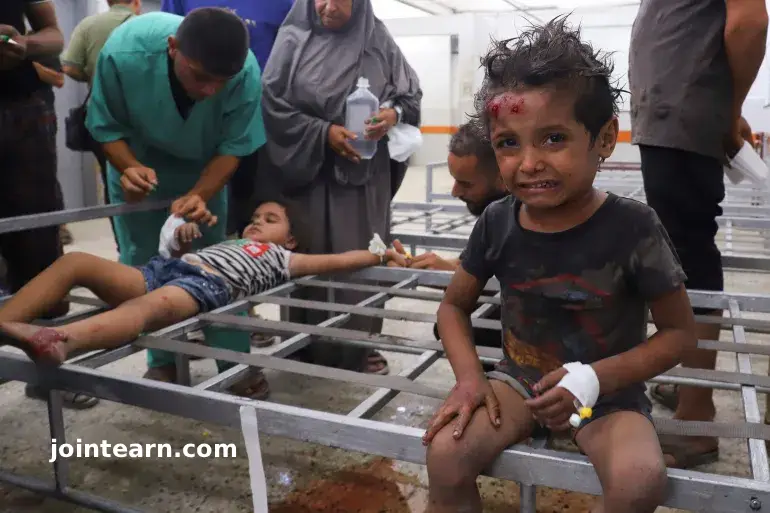
A new report from the UK-based charity Save the Children reveals that explosive weapons caused a record number of child deaths and injuries last year, with nearly 12,000 children affected globally. Of these, 70 percent were victims of explosive devices, highlighting the increasing dangers children face in modern urban conflicts.
The figures, published in the report Children and Blast Injuries, represent the highest number of child casualties since records began in 2006 and mark a 42 percent increase compared to 2020.
“The world is witnessing the deliberate destruction of childhood – and the evidence is undeniable,” said Narmina Strishenets, senior conflict and humanitarian advocacy adviser at Save the Children UK. “Children are paying the highest price in today’s wars … Missiles are falling where children sleep, play and learn, turning the very places that should be the safest, like their homes and schools, into death traps.”
Urban Warfare Drives Rising Child Casualties
In the past, children in conflict zones were more likely to die from malnutrition, disease, or failing health systems. However, as conflicts increasingly occur in densely populated urban areas, children are now more frequently injured or killed by bombs, drones, and other explosive devices striking hospitals, schools, and residential neighborhoods.
The report notes that conflicts claiming the most child casualties in 2024 included Gaza, the occupied West Bank, Sudan, Myanmar, Ukraine, and Syria.
Gaza: The Deadliest Conflict for Children
Gaza continues to be the deadliest conflict zone for children. Since October 7, 2023, approximately 20,000 children have been killed in Israeli attacks on the coastal enclave. The United Nations’ UNICEF estimates that over 64,000 children have been killed or injured in Gaza, with widespread destruction of homes, hospitals, and schools, and a collapse of essential medical services.
According to Save the Children, Gaza now has the largest cohort of child amputees in modern history. Even after a ceasefire took effect on October 10, Israeli strikes continued, killing at least 46 children in 2024. The report found that, on average, 475 children per month sustained potentially lifelong disabilities such as amputations, severe burns, complex fractures, and hearing loss due to explosive attacks.
Rising Casualties in Sudan and Ukraine
In Sudan, nearly 10 million children live within 5km of active conflict zones, with explosive weapons causing over 1,739 child casualties in 2024, up from 1,200 in 2023—a nearly 40 percent increase in a single year.
In Ukraine, child injuries caused by explosive weapons surged by 70 percent, rising from 339 in 2023 to 577 in 2024, reflecting the ongoing Russia-Ukraine war’s devastating impact on civilian populations, particularly children.
The Unique Vulnerability of Children
Children are disproportionately affected by explosive weapons due to their smaller bodies, developing organs, and unique psychosocial needs. Recovery from blast injuries is often more complex and prolonged than for adults, requiring specialized medical care and long-term rehabilitation.
“Children are far more vulnerable to explosive weapons than adults,” said Paul Reavley, consultant pediatric emergency physician and cofounder of the Paediatric Blast Injury Partnership.
“It takes specialized knowledge and continued research to ensure children can not only recover but grow after amputation or surgery,” added Anthony Bull, director of the Centre for Paediatric Blast Injury Studies at Imperial College London.
Long-Term Consequences
The report warns that the effects of explosive weapons extend far beyond immediate injuries. Explosive remnants of war continue to pose threats long after conflicts end, while affected children often suffer long-lasting mental health impacts, including trauma, grief, and disruption to education and social development.
Save the Children called for urgent international action to limit the use of explosive weapons in populated areas, improve protection measures for children, and increase medical and humanitarian support to communities impacted by urban warfare.
“Actions once condemned by the international community and met with global outrage are now brushed aside as the ‘cost of war.’ That moral surrender is one of the most dangerous shifts of our time,” the report concludes.


Leave a Reply